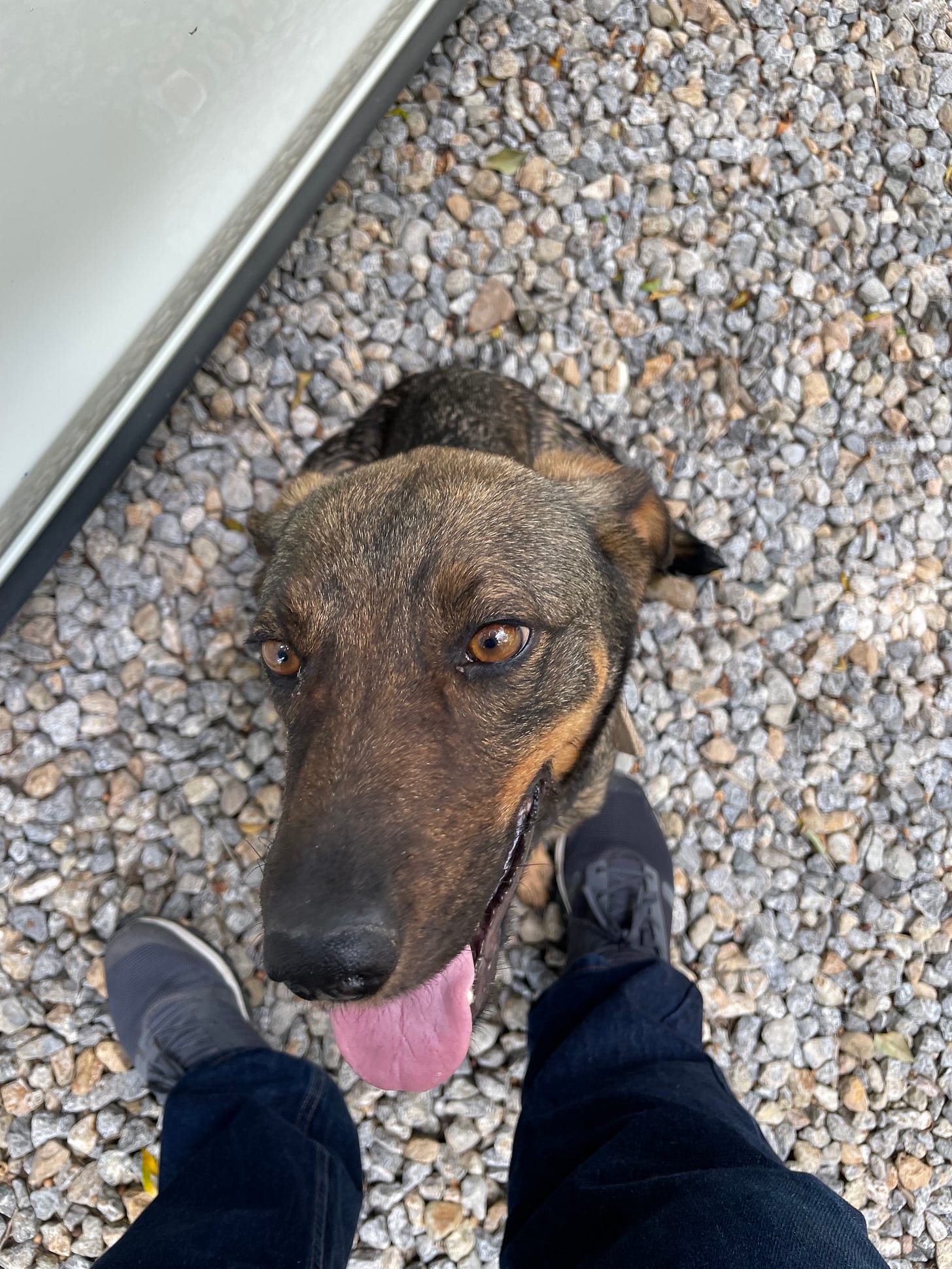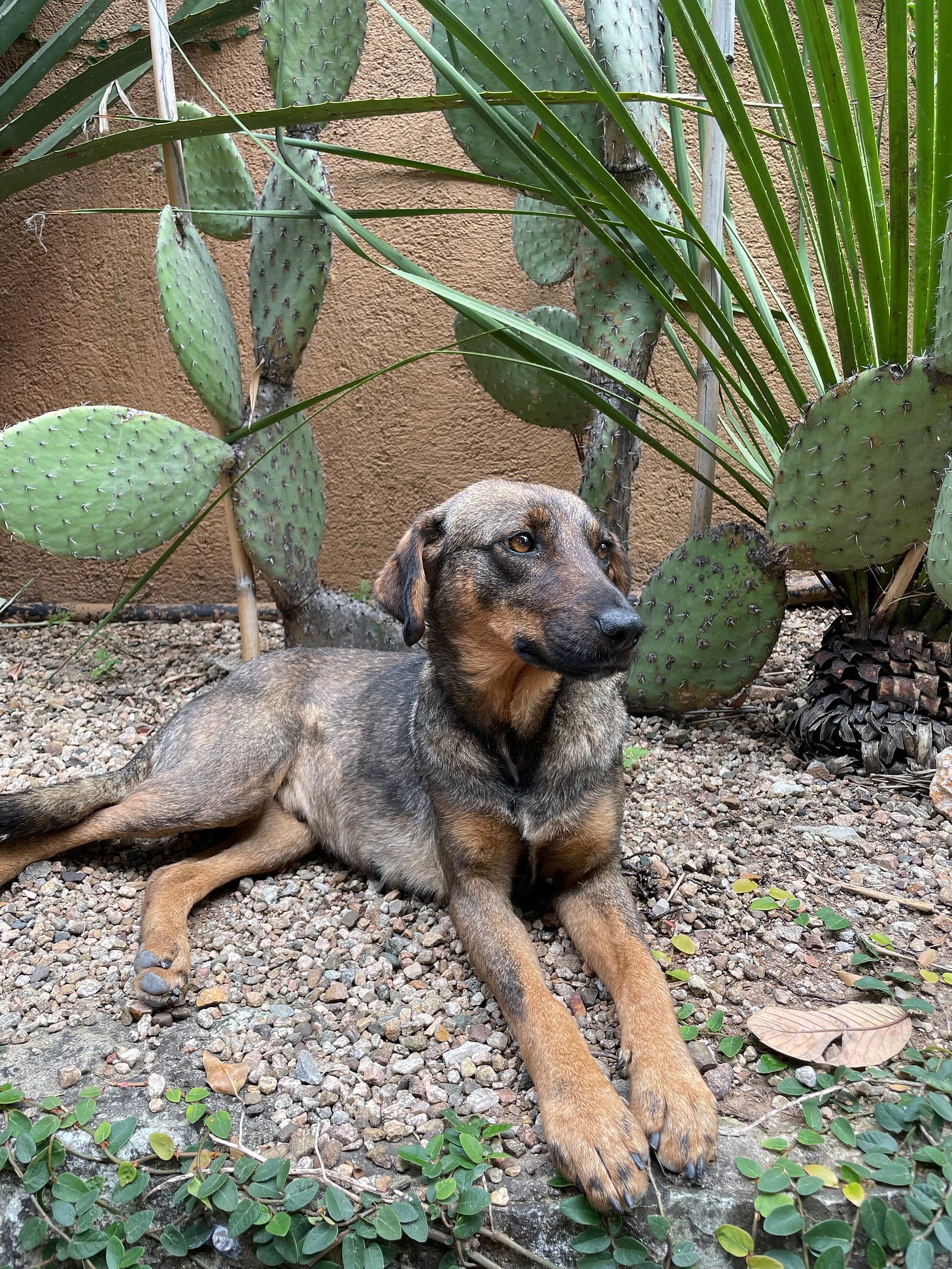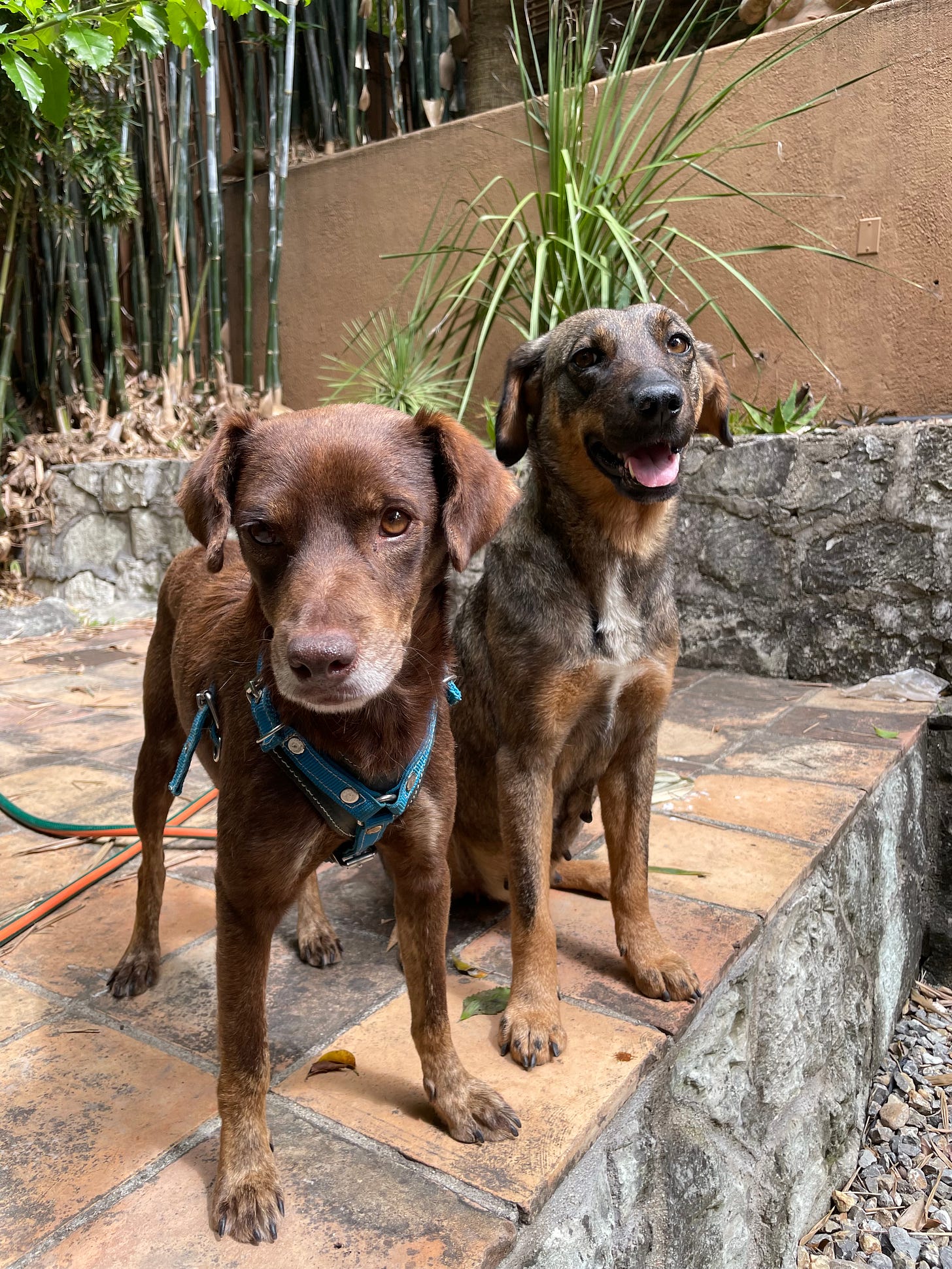“Dogs have a way of finding you” Penny said to us in the months leading up to our move.
We knew this was true. During our second trip to Oaxaca, which we took to make sure we weren’t completely insane and that our desire to move here wasn’t just a carryover fever dream from a particularly great vacation, we encountered a dog lying in the shade of our car in the village San Sebastián Etla.
She was probably about 15 pounds or so, tan colored and adorable, and immediately flipped over for belly rubs when I showed her the slightest bit of attention. I was completely smitten and in that instant named her Pepita—Pumpkin Seed—but we were leaving the next day and knew it would be at least a year before we would be able to return for good. We had no way of rescuing her and by the time we were back in Oaxaca she was long gone. Maybe adopted, but most likely gone from this world, the victim of a car accident, heart worms, fights with other animals, or any of the many other ways a dog here could meet their end.
I was slightly heartbroken but this is the way of things here, and less than a week after moving to Oaxaca we met Tigre (pronounced tee-gray), a skinny stray with soft brown eyes that was being sheltered by Frida, the owner of a restaurant about ten minutes down the road. We had been in Oaxaca for less than a week, and by the end of week two Tigre had come home with us.
Adopting a dog in Mexico is easy: just pick one. If you choose a dog off the street there are no questions. Dogs aren’t registered, aren’t tracked. There’s no microchipping system (at least not in Oaxaca). Often dogs owned by people are allowed to roam free, the only sign they belong to anyone being that either they have a collar on or are particularly well-groomed. Unless you pick a dog that seems like it has a home, it’s unlikely anyone will even notice if a stray dog goes missing. People in Oaxaca also typically do not neuter or spay their dogs and as a result there are, no surprise, a lot of dogs.
People will also abandon dogs. The canal that runs through our town was known as a spot where people would leave puppies they didn’t want, and Penny told us it wasn’t unusual to be walking along the road only to encounter some scared puppies sniffing around in the underbrush. People here also prefer dogs that are fierce. This means that, curiously, the dogs in need of rescuing are often much more lovely than the dogs people keep as pets.
We asked our friend Sherie about this the other night while eating homemade pasta at Gato Gordo, a charming but rather ramshackle restaurant which is also in San Sebastián Etla.
“Why,” we said to Sherie over a plate of just-rolled-out fettucini, “are the stray dogs here so sweet?”
“It’s because they have to be to survive,” she said.
Life as a stray dog in Mexico is tough. As with many developing countries, the vast majority of homes in Mexico have walls around them, and when they don’t have walls they have fences. Often behind those fences are large, aggressive, and very loud dogs. This was something Penny warned us about when we took home Tigre, who (at the time) didn’t show much propensity for barking. “People like dogs that are bravo—fierce.” The relationship people have with dogs here is often transactional; if the dog can’t fulfill its function, or if people don’t have the resources to care for a dog, they’ll abandon them.
The dogs people tend to keep are, more or less, assholes, but the dogs they abandon are sweethearts. Foraging will only get them so far; for a dog to survive here it needs to convince people to give it food. This means stray dogs, while often timid, tend to be quite nice. Even some of the most matted, rough looking callejeros (street dogs) will sidle up to you looking for some love, or perhaps just a loose tortilla or two.
Only a few weeks after taking home Tigre we found ourselves back at Frida’s and face-to-face with a new dog rescued from the town Teotitlán del Valle, which is famed for its rug weaving. A pack of 15 dogs was rounded up by the municipality, some of which likely weren’t even strays but were dogs whose owners allowed to roam. The town was going to put all of them down until a local expat who rescues dogs paid 1000 pesos (around $60 dollars) each to rescue them, and Frida stepped in to find one a new home.
As with Tigre, it was love at first pet. We named the dog Loohvana, the indigenous name for our town which translates as “the place where beans abound.” We call him Loo when he’s being nice, and Lucifer when he acts up.
Sherie came to Oaxaca with two dogs, driven from the Midwest across the border and down to Oaxaca. Now she has five, her walled hilltop home hiding that it contains a pack of some of the nicest, most enthusiastic, and adorable dogs you could ever hope to encounter. It’s easy to see how this could happen. When we adopted Tigre we braced ourselves for what we reasonably thought might be a challenging breaking-in period. We got Loo in part so that Tigre could have some company, but knew that even if it made things easier for Tigre, it would only be harder for us. So the fact that it’s actually been shockingly easy and that we ended up with two sweet, beautiful, incredibly nice dogs only reinforces the value in finding homes for these overlooked animals.








Excellent post Jacob!
Everything you say about the street dogs is spot-on, and it absolutely breaks my heart.
My wife and I were in Puebla last week to finalize our residente temporal. We're back in the States now with our 2 basenjis, but I can't get all of those roaming dogs in Cholula and Atlixco out of my head
I love that you've adopted Loo and Tigre! How do you deal with the emotional reality of the rest of them?
Loo and tigre are so adorable. I’m so happy these pups found you. Life is so much better with dogs.